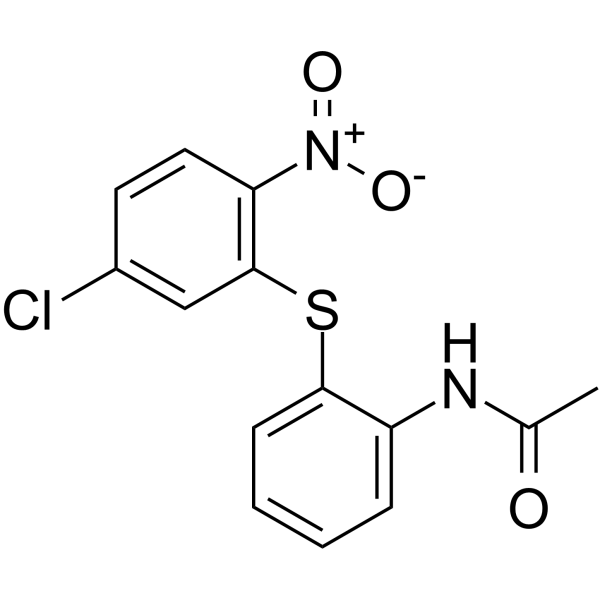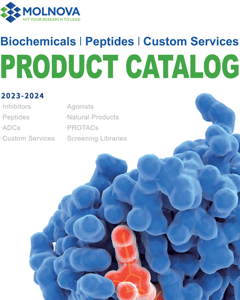
2-Acetamidophenyl 5-chloro-2-nitrophenyl sulfide
CAS No. 107522-19-0
2-Acetamidophenyl 5-chloro-2-nitrophenyl sulfide( —— )
Catalog No. M27592 CAS No. 107522-19-0
phosphodiesterase 7 inhibitor.
Purity : >98% (HPLC)
 COA
COA
 Datasheet
Datasheet
 HNMR
HNMR
 HPLC
HPLC
 MSDS
MSDS
 Handing Instructions
Handing Instructions
| Size | Price / USD | Stock | Quantity |
| 5MG | 421 | Get Quote |


|
| 10MG | 728 | Get Quote |


|
| 25MG | 1564 | Get Quote |


|
| 100MG | Get Quote | Get Quote |


|
| 200MG | Get Quote | Get Quote |


|
| 500MG | Get Quote | Get Quote |


|
| 1G | Get Quote | Get Quote |


|
Biological Information
-
Product Name2-Acetamidophenyl 5-chloro-2-nitrophenyl sulfide
-
NoteResearch use only, not for human use.
-
Brief Descriptionphosphodiesterase 7 inhibitor.
-
Descriptionphosphodiesterase 7 inhibitor.
-
In Vitro——
-
In Vivo——
-
Synonyms——
-
PathwayOthers
-
TargetOther Targets
-
RecptorJAMM protease
-
Research Area——
-
Indication——
Chemical Information
-
CAS Number107522-19-0
-
Formula Weight322.76
-
Molecular FormulaC14H11ClN2O3S
-
Purity>98% (HPLC)
-
Solubility——
-
SMILESCC(=O)Nc1ccccc1Sc1cc(Cl)ccc1[N+]([O-])=O
-
Chemical Name——
Shipping & Storage Information
-
Storage(-20℃)
-
ShippingWith Ice Pack
-
Stability≥ 2 years
Reference



-
Engeletin
Engeletin possesses potent inhibition of PGE2 release with IC5 values of 19.6 μg/ml.
-
Oxindole
Oxindole is an aromatic heterocyclic building block.?2-indolinone derivatives have become lead compounds in the research of kinase inhibitors.Oxindole structure has been used in receptor tyrosine kinases (RTKs) inhibitors such as SU4984 and intedanib, the RTK family represents an important therapeutic target for anti-cancer drug development.
-
4-Methylcatechol
4-methylcatechol is a metabolite of homoprotocatechuic acid. It is both a substrate and a suicide inhibitor of Catechol 23-dioxygenase. 4-methylcatechol is known to induce the production of brain-derived neurotrophic factor (BDNF). Recent studies have suggested that a lack of brain-derived neurotrophic factor (BDNF) in the limbic system may cause neuropathic pain.



 Cart
Cart
 sales@molnova.com
sales@molnova.com


